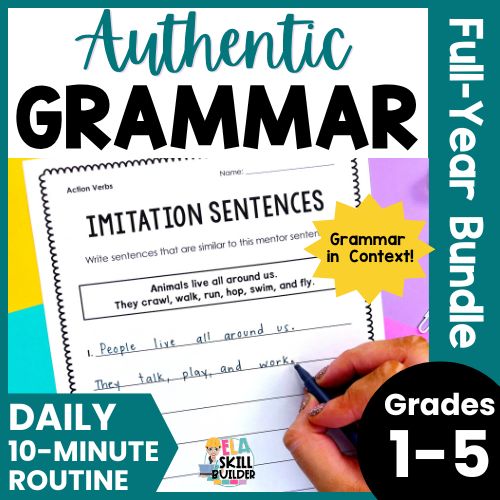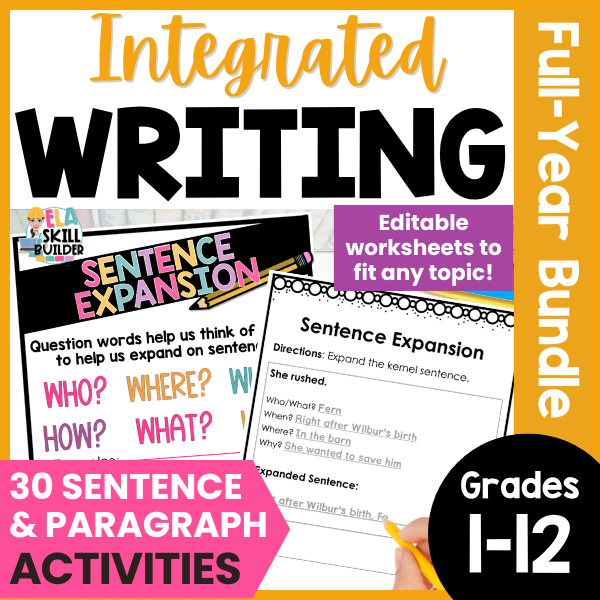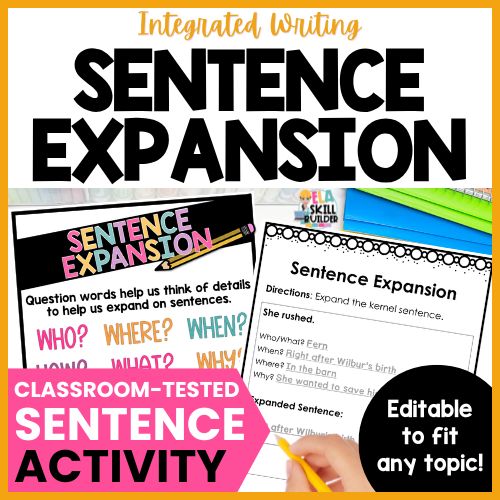
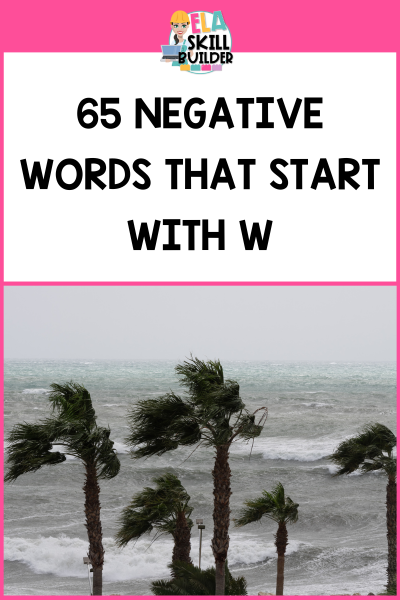
65 Negative Words that Start with W with Examples
Need a list of negative words that start with W? Look no further!
Imagine this: You’re reading a story with your students, and the main character is in a rough spot. You ask, “How do you think they feel?” Hands shoot up, and you hear “bad,” “sad,” and maybe “angry.” But you know there’s more to it than that. How can we help students describe feelings with a bit more depth and powerful impact using the right words for effective communication?
This is where knowing a wider range of vocabulary—including words for negative feelings and negative emotions—can make a big difference. Words with shades of meaning help students express themselves, whether they’re talking about their own experiences, analyzing characters, or experimenting with creative writing. And while it might seem unusual to focus on negative words, understanding them can be just as valuable as learning positive ones, especially when considering the negative influence some emotions can have on a character or situation.
In this post, we’ve gathered 65 negative words that start with the letter W for when a bit of edge is needed. This list of negative words that start with W can be used as a starting point for more creative ways to help students expand their language skills. Let’s explore why and how these words can become a meaningful part of vocabulary lessons!
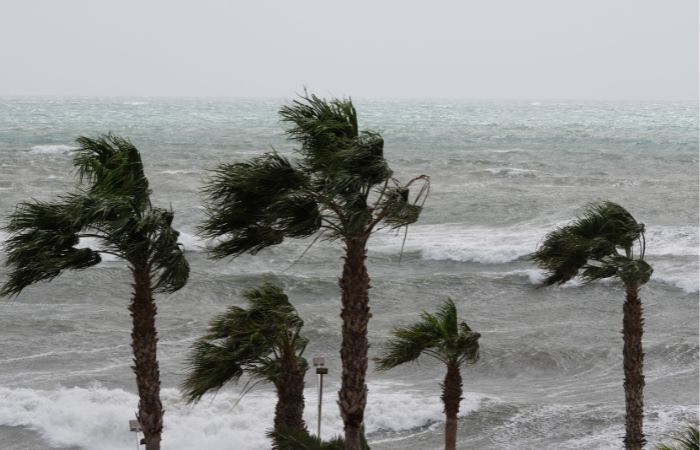
Why Teach Negative Words?
Teaching both positive and negative words helps students develop a richer vocabulary, allowing them to describe emotions and experiences with greater accuracy. This variety goes beyond simple labels like “bad” or “mean,” giving students the language to explore a character’s motives and traits in more specific ways.
Negative words that start with W are particularly useful for helping students express emotions and analyze character traits. Words like “wounded” or “wayward” provide tools for understanding complex characters and emotions, which strengthens both reading comprehension and self-expression.
Students encounter negative words in stories and real-life situations every day. When reading about a character who feels “wounded” or “withdrawn,” students can connect these words to their own experiences and emotions. This expanded vocabulary also gives them the words to talk about their personal feelings.
The use of negative words in teaching is not just about labeling emotions; it’s about deepening students’ understanding of how words can affect communication in various contexts. By learning to use and understand negative words, students can better express frustration, sadness, and disappointment, all of which are a natural part of personal life. This ability to articulate complex emotions enhances their writing, reading comprehension, and overall emotional intelligence.
Incorporating negative words into language lessons also introduces students to the diversity and depth of the English language. Not all words have clear, obvious meanings—some are obscure words that require more context to understand. This helps students engage with language in a more nuanced way and teaches them to appreciate the richness of vocabulary available for expressing subtle emotions.
By using negative words in the classroom, teachers equip students with impactful words that can help them communicate more effectively, whether they’re discussing a fictional character’s struggle or reflecting on their own experiences. These obscure words and deeper expressions expand their ability to communicate with precision and clarity, fostering more thoughtful and sophisticated interactions.
Writing Opt-In (Delete this heading!)

Teaching Tips for Introducing Negative Words that Start With W
Introducing negative words that start with W to elementary students requires a thoughtful approach, as they can be a powerful tool for expressing emotions, actions, and situations. Here are some tips to ensure the process is both effective and age-appropriate.
Have Age-Appropriate Guidelines
When teaching negative words that start with W, it’s important to make sure the language is suitable for the students’ developmental level. Start by explaining that negative words are simply descriptive tools used to express feelings, actions, or situations. Emphasize that these words are not meant to label people as “bad” but to describe specific behaviors or moods. Provide examples that are relatable and easy to understand, like “silly,” “sad,” or “shy,” before moving on to more complex words.
Use a List of Positive Words for Balance
While teaching negative words that start with W, it’s also a great idea to introduce a list of positive words. This helps students understand the full range of vocabulary available to them and see the contrast between the two. Balance is key, as using a mix of both positive and negative words enables students to express themselves more fully. Encourage students to describe characters, situations, or even their own emotions using both types of words. Introducing positive alternatives alongside negative words can help students find a range of expressive choices in their writing.
Contextualize Negative Words in Stories
To help students understand how negative words that start with W function, it’s helpful to place them in context. Have students read short stories or book excerpts where characters display negative traits. As they read, ask them to highlight the negative words used to describe the characters or situations. Encourage critical thinking by asking them to analyze how these words affect the characters’ motivations and the overall tone of the story. Then, have them discuss how these words contribute to the narrative development. This exercise will deepen their understanding of how negative words shape both the plot and character development.
Role-Play to Understand Negative Traits
Role-playing can be a fun and effective way to help students internalize negative words. Assign different negative traits to pairs of students and have them act out scenarios where these traits come into play. Encourage students to focus not only on their actions but also on their facial expression, as this adds depth to their portrayal of the character. After each role-play, ask the class to identify which words best describe the characters’ behavior. This interactive approach allows students to see how negative words are used in daily life, enhancing their comprehension and vocabulary skills.
Implement a “Word of the Day”
Make learning fun with a “Word of the Day” activity! Each day, introduce a new negative word that starts with W and challenge students to use it in a sentence throughout the day. At the end of the day, have them share their sentences with the class. This not only boosts vocabulary but also helps students practice using the word in context.These activities also provide opportunities for students to explore funny words and how they can be used in creative ways. It encourages them to think outside the box and add some humor to their language.
By following these guidelines, you’ll help students build a strong vocabulary and understand how to use negative W words constructively in their writing and communication, while also encouraging them to incorporate these words into their everyday language. This approach allows students to expand their vocabulary and apply it in practical, real-life situations, helping them communicate more clearly and expressively both inside and outside the classroom.
Full List of Negative Words that Start with W
In this section, we’ll explore negative words that start with W and have negative connotations. For convenience, we’ve categorized them into different groups, so you can easily find words that describe personality traits, emotions, actions, settings, and adverbs. Example sentences are also included to show how each word is used in context.
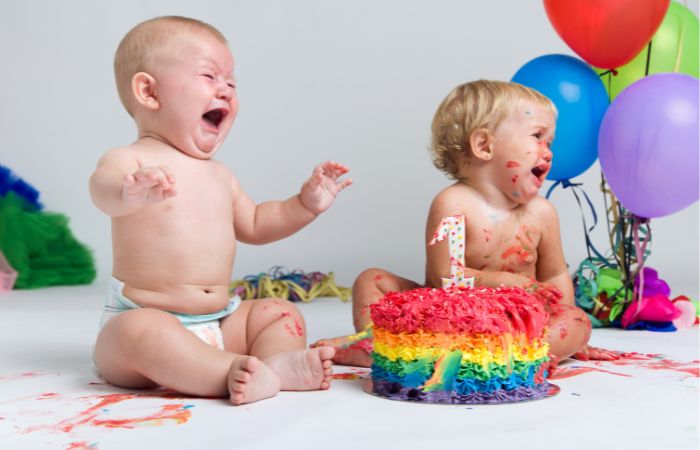
25 Negative Descriptive Adjectives that Start with W
These negative descriptive words that start with W include a list of adjectives that describe personality traits, emotions, or moods, helping students express more specific characteristics. Here is a list of 25 negative adjectives:
- Wretched – The wretched weather ruined our picnic plans.
- Weak – After being sick for a week, I felt too weak to get out of bed.
- Weary – The weary travelers finally arrived at the hotel after their long journey.
- Wicked – The wicked witch cast a spell that sent a chill through the village, leaving everyone in fear.
- Woeful – The woeful look on his face as he held out a helping hand showed how desperate he was for assistance.
- Wet – My clothes were completely wet after walking through the rain for a long time without an umbrella.
- Wasteful – The wasteful use of water during the drought was concerning.
- Wild – The wild animal charged through the forest, scaring everyone in its path.
- Wanting – His efforts were wanting, and he didn’t complete the project on time.
- Wimpy – He felt too wimpy to try out for the team, afraid of failing.
- Withdrawn – After the fight, she became withdrawn, retreating to her room with an old book to escape reality.
- Wary – The wary cat carefully watched the strangers entering the house.
- Whiny – The whiny child threw a tantrum when his best friend didn’t want to play the game he suggested.
- Worn – The worn shoes barely held together after years of use.
- Worthless – He felt worthless after being left out of the team’s celebration.
- Wobbly – The wobbly bridge trembled under their feet, reminding them of the precarious nature of life in the Middle Ages.
- Wounding – The wounding words he said to her left a lasting emotional impact.
- Wasted – The wasted food at the party could have fed a whole other group of people.
- Wrinkled – The wrinkled paper looked like it had been through a lot before reaching my desk.
- Wayward – The wayward child ignored all instructions, causing chaos in the classroom.
- Wandering – The wandering child couldn’t seem to sit still during the lesson, distracting others.
- Wholesome – The wholesome atmosphere at the family gathering made everyone feel at home.
- Worn-out – The worn-out shoes made the long hike even more difficult than it needed to be.
- Whimsical – The whimsical decorations gave the party a quirky, fun vibe.
- Windy –The weather forecast predicted windy weather, so we decided to postpone the outdoor event to avoid any accidents.
These common adjectives provide a detailed way to describe various negative traits and behaviors. Understanding these negative words that start with W can help students recognize and articulate more specific emotions and characteristics in themselves and others.
20 Negative Action Words that Start with W
These negative words that start with W describe actions that may be harmful or undesirable, perfect for character analysis or story development.
- Wreck – The storm wrecked the house, leaving it uninhabitable.
- Wander – He wandered aimlessly around the mall, not knowing what to do.
- Whine – She continued to whine about the homework, despite it being easy.
- Withdraw – He chose to withdraw from the group project, leaving everyone else to pick up the slack.
- Waste – Don’t waste your time on activities that don’t benefit your future.
- Wrangle – They wrangled over the rules for hours, never reaching an agreement.
- Weaken – The long hours of study began to weaken her resolve.
- Wobble – The chair wobbled under his weight, making it uncomfortable to sit in.
- Whip – He whipped the horse, causing it to run faster than necessary.
- Worsen – The situation continued to worsen as no one took responsibility for the problem.
- Wound – His words wounded her deeply, leaving her hurt and upset.
- Whisk – He whisked the papers off the desk without considering the consequences.
- Wallop – The boxer walloped his opponent, knocking him out in the first round.
- Wallow – She chose to wallow in her frustration instead of finding a solution.
- Wrinkle – Don’t wrinkle the paper; it needs to stay neat for the project.
- Wreak – The storm wreaked havoc on the coastal town.
- Wither – The plant withered in the sun due to lack of water.
- Whack – He whacked the ball too hard, sending it into the neighbor’s yard.
- Warrant – The police officer felt the situation warranted immediate action.
- Wince – She winced in pain as the nurse applied the bandage to her wound.
The use of words in this section highlights how negative words that start with W can describe harmful actions, aiding in character analysis and storytelling. These negative words that start with W help students portray negative behaviors and add depth to their writing.
20 Negative Adverbs that Start with W
Negative words that start with W can be a powerful tool for describing actions and behaviors in writing. By incorporating these negative adverbs into their vocabulary, students can add more depth and emotion to their stories, helping to convey a stronger sense of negativity or discomfort.
- Worse – His situation only seemed to get worse after he made that decision.
- Weakly – She weakly protested when they asked her to join the team.
- Wildly – The children screamed wildly in excitement, ignoring all the rules.
- Withdrawnly – He responded withdrawnly to the question, avoiding eye contact.
- Wastefully – The company operated wastefully, ignoring opportunities for improvement.
- Worriedly – She looked worriedly at the clock, realizing she was late for her meeting.
- Wearily – He wearily trudged home after a long, exhausting day at work.
- Wretchedly – The old car sputtered wretchedly, making it hard to drive anywhere.
- Whiningly – She spoke whiningly, asking for a break every few minutes.
- Wantonly – He acted wantonly, making decisions without thinking about the consequences.
- Wholly – The decision was wholly unsatisfactory to everyone involved.
- Wrongfully – He was wrongfully accused of cheating, and it caused much distress.
- Weepingly – She spoke weepingly about the loss of her childhood pet.
- Willingly – He didn’t willingly accept the responsibility, but he had no choice.
- Wickedly – The villain acted wickedly, with no remorse for his actions.
- Witheringly – She gave him a witheringly cold stare after his rude comment.
- Wrathfully – He shouted wrathfully, enraged by the unfair treatment.
- Wistfully – She gazed wistfully at the old photos, longing for the past.
- Warily – She eyed the stranger warily, unsure of his intentions.
- Whimsically – She spoke whimsically about the adventures she hoped to have, though it seemed unrealistic.

Conclusion
To wrap up, integrating 65 Negative Words that Start with W into your lessons opens up exciting opportunities for different ways to engage students in deeper discussions about language and expression. By focusing on words with specific purpose, you not only give your students the ability to describe negative emotions and experiences but also help them become more adept at using language for various writing tasks. These words provide a rich variety of language tools that students can apply to both creative and analytical writing, improving their ability to convey complex feelings and scenarios with precision.
These words will play a crucial role in enriching their vocabulary and broadening their understanding of how words can impact writing in various contexts. Students will gain a deeper appreciation for the power of language to shape tone, mood, and meaning, whether they are analyzing a story’s theme or crafting their own narrative. When used alongside positive language, these words create a balanced approach, ensuring students grasp both the light and dark sides of communication, an essential skill for both writing and speaking. Such words with negative meaning help students understand the full emotional range of language, which adds depth to their work.
By incorporating these impactful words, you’re preparing students to express themselves more accurately and thoughtfully, giving them the tools they need to communicate effectively to their intended audience. As they develop a more nuanced understanding of language, students will become more confident in their ability to use words strategically to achieve their communicative goals. Additionally, this deeper exploration of vocabulary sets them up for success not just in academic settings but also in their personal and professional lives, where the power of words is crucial in building strong connections and understanding.
In summary, the integration of negative words in your curriculum helps students build a fuller, more well-rounded vocabulary, one that supports their growth as writers, readers, and communicators. By giving them a robust understanding of how words can influence meaning and emotion, you’re setting them up for lifelong success in expressing themselves with clarity, confidence, and intention.
Full-Year Grammar & Writing Curriculums
Check out these best-selling grammar and writing resources for grades 1-5! Aligned with elementary language and writing standards, these materials offer systematic and explicit instruction to help your students become confident, independent writers.

Related Posts
How to Run a Writing Workshop in Elementary


Hey Teachers,
I'm Jen from
ELA Skill Builder!
My mission is to empower elementary teachers like you with the tools and confidence to teach writing effectively, so your students can grow into strong, capable writers.
Best Sellers!
Writing resources
Features explicit writing workshop lessons for narrative, informational, and opinion writing.
Grammar resources
Features a simple weekly routine that teaches grammar in context in just 10 minutes a day.
writing prompts
Features 810 prompts designed to strengthen paragraph writing skills all year long!
cross-curricular writing
Features 30 sentence and paragraph activities inspired by The Writing Revolution that fit any subject.
coupon code
Get 15% off Your First Purchase
free lessons!
Grab 5 free prewriting lessons to kick off your narrative writing unit – all materials included!
jOIN A COMMUNITY
writing training
Features 4 hours of video lessons designed to help you run a structured, effective, and engaging writing block.
free gramamr routine!
Features a free 5-day routine for teaching any grammar skill in context, in just 10 minutes a day!
free SENTENCE ACTIVITY
Features a free, editable sentence activity that helps students expand sentences for any topic.
contact jen!
Got questions? Fill out this contact form, and I’ll get back to you as soon as possible.




